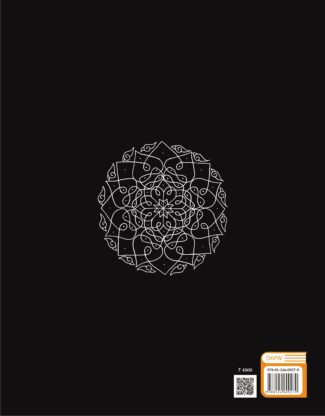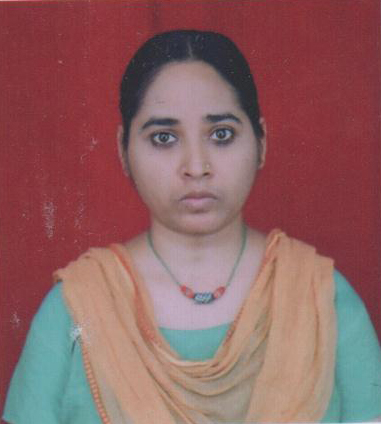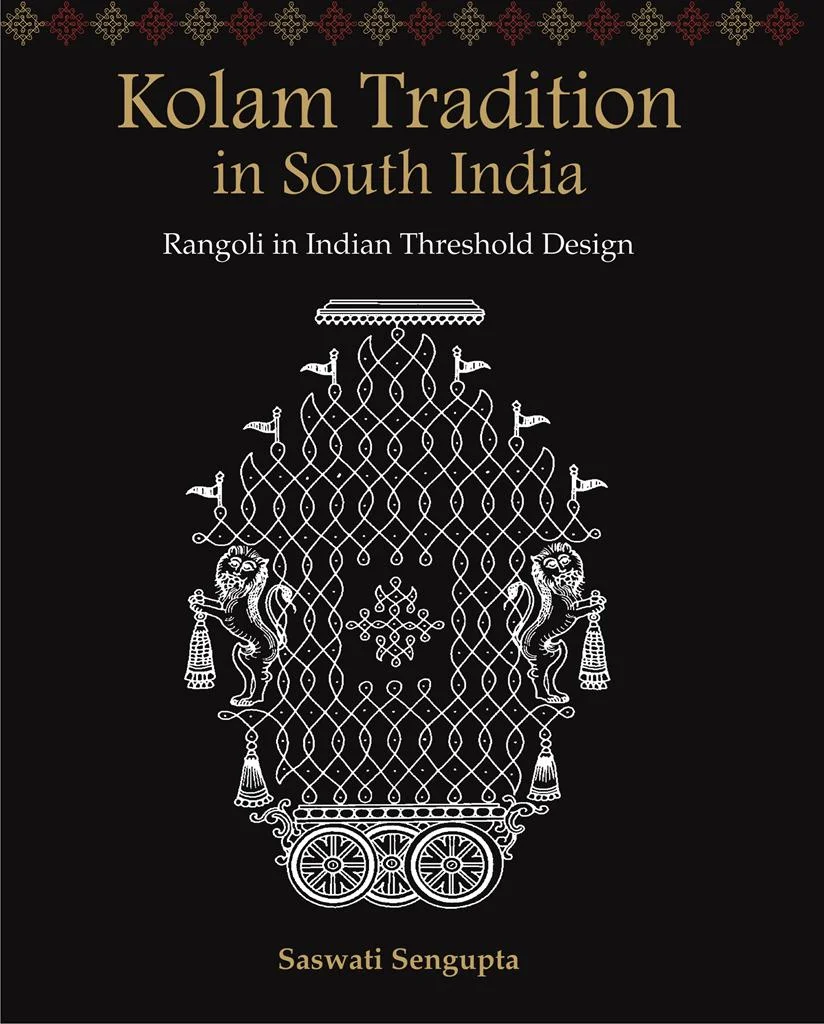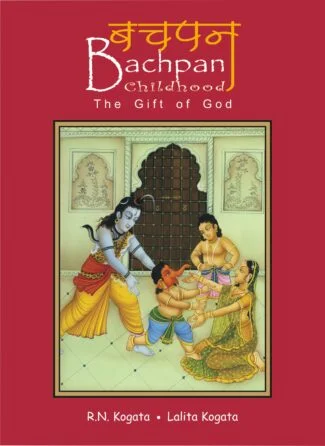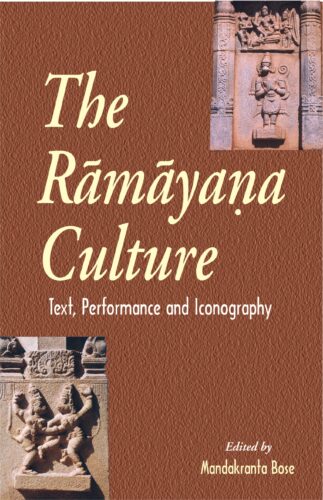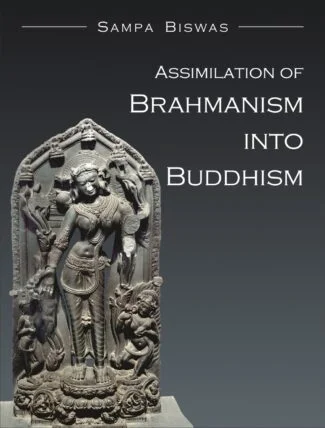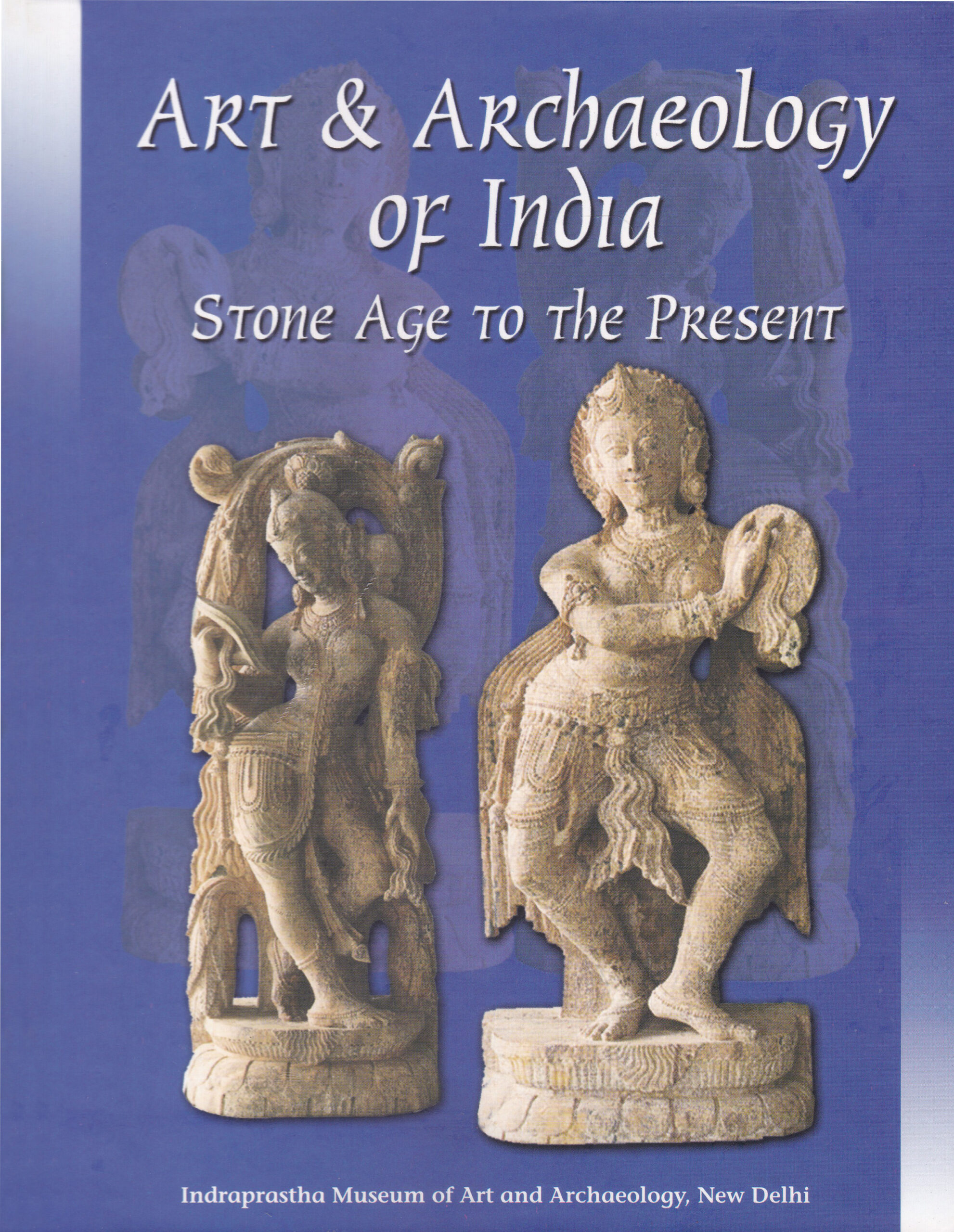

Kolam Tradition in S...
Kolam Tradition in South India
Rangoli in Indian Threshold Design by: Saswati SenguptaKolam is propitious threshold drawings by women defining religious and cultural space in South India. Integrating the entire Tamil community in kinship, ephemeral kolam structure is precise and beautiful prayer for protection and prosperity. Aesthetic experience of kolam is in its symmetrical composition that correlates with our concept of the cosmos.
$120.00
ISBN: 9788124609279
Year Of Publication: 2019
Edition: 1st
Pages : xxiv, 383p.
Bibliographic Details : Bibliography; Index
Language : English
Binding : Hardcover
Publisher: D.K. Printworld Pvt. Ltd.
Size: 29
Weight: 2000
Kolam is propitious threshold drawings by women defining religious and cultural space in South India. Integrating the entire Tamil community in kinship, ephemeral kolam structure is precise and beautiful prayer for protection and prosperity. Aesthetic experience of kolam is in its symmetrical composition that correlates with our concept of the cosmos. In the geometric grid of kolam the number of dots called pulli algorithmically guides the number of crossings that requires overall smoothening of edges in the design. Large number of infinite knot pattern follows a set of elegant mathematical rules that is at the same time artistic. According to Marcia Ascher, Emeritus Professor of Mathematics at Ithaca College, the Principles of Numbers in kolam is dynamics and motion in matter demonstrating multiplicity of the void. Kolam drawings trace unilinear path with singular regularity expressive of polyrhythmic music. Dancer Chandralekha observed that kolam is a kind of yoga. Kolam as an art form has entered computer graphics, ethnomathematics and ethnomusicology, textile industry, therapeutic applications and tactile spatial education for visually challenged. The pervasive threshold drawing of Tamil Nadu are unique but at the same time kolam is extendable to the tradition of tracing patterns in sand produced by several cultures in Africa and South Pacific islands as well as to the brilliant mosaics of ancient Rome.
Preface
Acknowledgements
Introduction
Conserving Cultural Landscapes
Auspicious Appearance
Network Designs
Cultural Moorings
Methodology of Research
Cosmos and Cosmetics
Mathematical Concepts
Kolam Picture Language
The Apotropaic Pattern
1. Socio-Religious Background: Hindu Festivals, Vratas and Rituals
Procedural Memory in Kolam
Aspects of Kolam and Acquisition of Skill
Dots and Cognition: Form, Function and Technique
Numbers Concept: Mathematical Properties in Grid of Dots
Braided Knot Structure: Form and Function
Putting Kolam: Magic, Ritual and Religious Festivals
Vrata and Folk Practices: Lamp Kolam and Mahalaksmi Puja
Festival and Vrata: Vaikuntha Ekadasi
Festival and Vrata: Margazhi Kolam
Festival and Vrata: Margazhi Kolam in Past and Present
Gajendra Moksam and Makara Jyothi
Pongalo Pongal: Festival Kolam
Murugan Festival and Vrata: Thai Pusam on Pusam Constellation
Festival and Vrata: Thai Pusam in Siva Temple
Festival of Light: Karthigai Dipam
Festival: Rathna Thambalam Kolam in Navaratri Kolu
Festival of Nataraja: Maha-Sivaratri and Sivalinga Kolam
Festival and Vrata: Chitra Purnami (Full Moon)
Tamil New Year: Puthandu Festival
Dipavali: The Festival of Light
Cognition and Caste: Marriage Kolam in Tamil Community
Cognition and Caste: Vilakkedu Kalyanam and Siru-veetu Pongal
The Navagraha Kolam: Passage of Time and Seasons
Auspicious Symbols: Feet of Deities
Auspicious Symbols
Unusual Methods: New Trends and Mechanical Kolam
Unusual Methods: Kolam in Sri Lanka
Short Observation: Threshold Art in Other Parts of India
Rangoli
Alpana of Bengal
2. Socio-Cultural Aspects of Kolam: Symbols, Labyrinth and Tattoo
Introduction: Form and Meaning
Peacock and Parrot: Invoking Divine Presence
Leaf and Flowers: Mango Leaf, Vattarai and Parijata Kolam
Hridaya Kamalam (Lotus of the Heart) Kolam
Lotus Pond: Kolam and Mandala
Butterflies and Birds: Collective Consciousness
Natchatiram Kolam: The Star Mandala
Astamangala: Universal Appeal of Auspicious Symbols
Parijata Kolam: The Timeless Frame of Mythology
Manakolam: Inception and Imagination
Fertile Cobra Deity: Snake Kolam
Kolam: Art Historical View
Kolam Maze: Magic of Labyrinth
Kolam: A Metaphysical View
Kolam Pattern on the Body: Tattoo
Labyrinth: Malekulan Sand Tracings
Sona Sand Drawings of Angola
Socio-religious Parameters
3. Ethno-Archaeology of Kolam: Geometry, Form and Function
Code of Natural Laws: Structural Wisdom of Geometry
Integration of Art, Science and Mathematical Properties
Celestial Cosmology: Kolam the Terrestrial Time Keeper
Form Follows Function: The Inner Geometry of Nature
Kolam Mandala: Yantra and Tantra
Design Elements and Principles: Typology in Kolam Family
Picture Language: Mathematical Properties
The Kolam Family: Geometry and Proportion
Art and Archaeology: Roman Mosaic and Kolam
Applied Art and Kolam: Weaving and Islamic Tile Work
Universal Language of Kolam: Musical Notations
Kolam: From Domestic Art to Public Sphere
Haunting Kolam: In a Far Country
Archetype and Art: Empowerment and Healing
The Kolam Geometry: Transforming Tradition
4. Epilogue: The Logic of Relationship Appendices
1. Kolam and Celtic Interlaces
2. Labyrinth: Where Eyes and Hand Lead
3. Yantra and Kolam Are Instruments to Create Ritual Purity and Protection
4. Cognition in Pulli Kolam: Unified Endless Knot
5. Archaeological Evidences of Interlacement
6. Weaving Twisting and Bundle of Thread Patterns
7. Vaikuntha Ekadasi
8. Margazhi Thiruvempavai
9. Kolam Ushers Equinoxes and Solstices
10. Tamil New Year in Astronomical Calendar
11. Pongal Mythology: Agriculture and Culture
12. Thalaivar Pongal Song
13. The Kolleru Thazhuvuthal Ritual
14. Extracts from UNESCO Courier, March 1984
15. Kolam for Inscription on the Representative List in 2010
16. Thai Pusam and Palani Murugan
17. Onam: Flower Carpets
18. Art and Religion: Kolu and Hinamatsuri of Japan
19. Legend of Dipavali
20. Wedding Rituals of Tamil Saivite Brahmin
21. Cognition and Caste: Beladingala Puja
22. Sri Vinayagar Festival
23. Sarpam Thullal
24. Labyrinth in Indian Classics
25. Svastika Labyrinth in South Asia
26. Kolam Extracts: Malekulan Sand Tracings
27. Sona Sand Drawings of the Chokwe in Angola
28. Kolam and Sona Drawing: Gendered Transnational Spaces
29. L-systems: Digital Study of Kolam
30. Kolam Cube (UKC)
31. Mosaic Art in the Ancient World: Roman Floor Mosaic and Kolam
32. Stunning Math Breakthrough: The Medieval Islamic Art The Times of India, New Delhi, Saturday, 24 February 2007
33. Science and Alchemy: Incremental Nature of Art and Science
34. Kolam, Music and Mathematics
35. Kolam in Cult and Ritual: Poetry in Line
Glossary
Bibliography
Index



